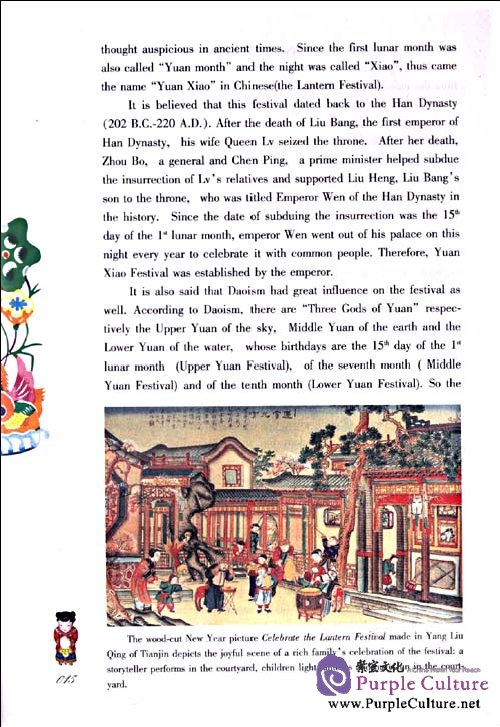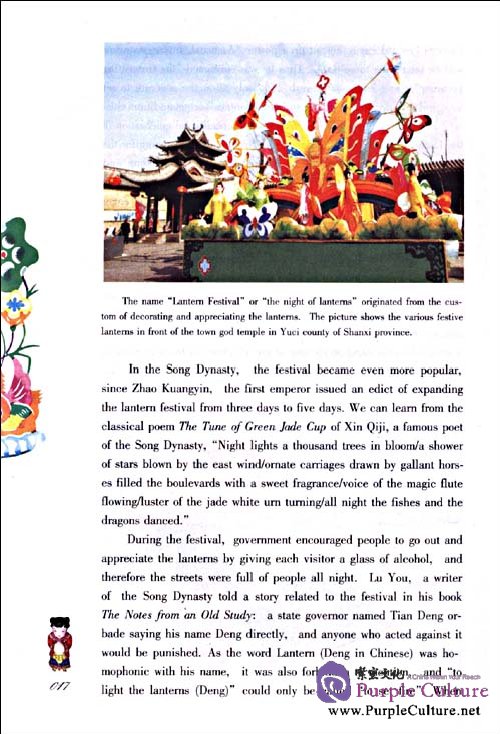Sample Pages Preview


The name "Lantern Festival" or "the night of lanterns" originated from the custom of decorating and appreciating the lanterns. In the East Han Dynasty, Buddhism was introduced to China, in the belief of which firelight was compared to the god of power, and lanterns were used as a kind of sacrificial vessels before Buddha. The Emperor Ming of the Han Dynasty issued an edict of lighting up the lanterns as a worship service on the night of 15th day of the 1st lunar month and went to attend the service in person, and the practice was handed down for generations.
Since its debut, the Lantern Festival had become a grand event of the year in all historical times. In the Southern and Northern Dynasties (420-589 A.D.), the Emperor Jian Wen of Kingdom Liang wrote a famous essay Poem of the Lanterns inspired by the spectacular celebration. In the Tang Dynasty, the festival became a fixed holiday and lasted three days, and the curfew of the capital city Changan was lifted during the three nights so as to give people a chance to enjoy lanterns. On the festival nights, the capital city was a scene of hustle and bustle while people were swarming in the streets with an air of excitement. In his poem The night of the Upper Yuan Festival, Cui Ye wrote. "Who could sit still when the moonlight shone and left the lanterns behind?" And Su Weidao wrote in his poem The night of 15th day of the 18` Lunar Month, "The tree of flame accompanies the flower of silver, and the iron chains links the bridge of stars." The term "the tree of flame and the flower of silver" became a popular simile for describing the fantastic view of the lanterns and the fireworks.
In the Tang Dynasty, when the country was quite rich and powerful, the fair of lanterns was also an occasion for the royalties to show off their wealth. According to the chronicle of Kai Yuan and Tian Bao periods(713-756 A.D.), Li Longji, the Emperor Tang Ming Huang of the Tang Dynasty, demanded to build a lantern mansion with a height of 150 chi shining its light above the whole capital city. The Lady Han ordered to build a lantern tree with a height of 80 chi to overshadow the mansion. "The tree stood on a high hill, and when lighted up on the festival night, its splendor could be seen from far away."

